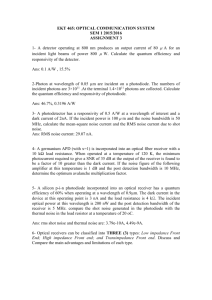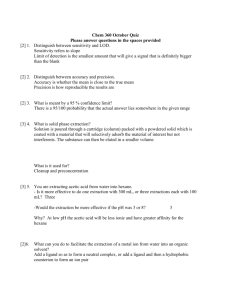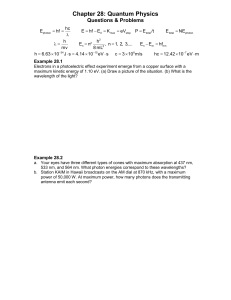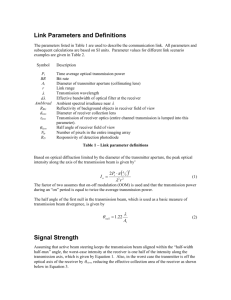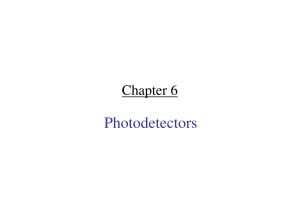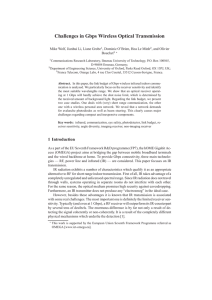ETM4106Tutorial9
advertisement
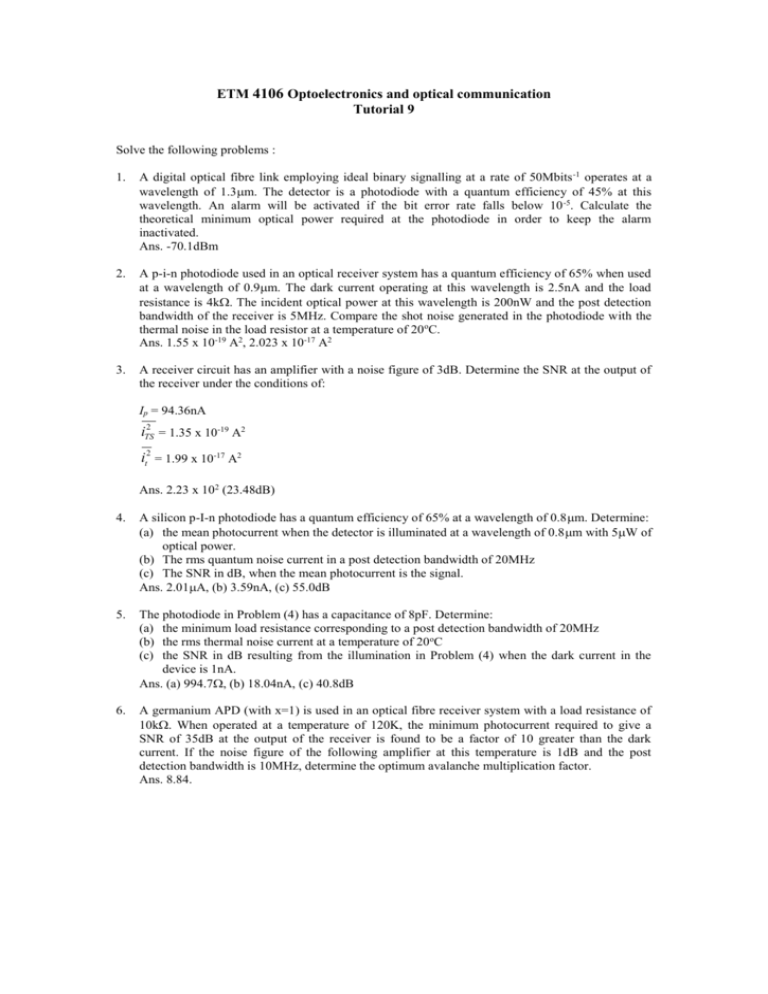
ETM 4106 Optoelectronics and optical communication Tutorial 9 Solve the following problems : 1. A digital optical fibre link employing ideal binary signalling at a rate of 50Mbits -1 operates at a wavelength of 1.3m. The detector is a photodiode with a quantum efficiency of 45% at this wavelength. An alarm will be activated if the bit error rate falls below 10 -5. Calculate the theoretical minimum optical power required at the photodiode in order to keep the alarm inactivated. Ans. -70.1dBm 2. A p-i-n photodiode used in an optical receiver system has a quantum efficiency of 65% when used at a wavelength of 0.9m. The dark current operating at this wavelength is 2.5nA and the load resistance is 4k. The incident optical power at this wavelength is 200nW and the post detection bandwidth of the receiver is 5MHz. Compare the shot noise generated in the photodiode with the thermal noise in the load resistor at a temperature of 20 oC. Ans. 1.55 x 10-19 A2, 2.023 x 10-17 A2 3. A receiver circuit has an amplifier with a noise figure of 3dB. Determine the SNR at the output of the receiver under the conditions of: Ip = 94.36nA iTS2 = 1.35 x 10-19 A2 it2 = 1.99 x 10-17 A2 Ans. 2.23 x 102 (23.48dB) 4. A silicon p-I-n photodiode has a quantum efficiency of 65% at a wavelength of 0.8m. Determine: (a) the mean photocurrent when the detector is illuminated at a wavelength of 0.8m with 5W of optical power. (b) The rms quantum noise current in a post detection bandwidth of 20MHz (c) The SNR in dB, when the mean photocurrent is the signal. Ans. 2.01A, (b) 3.59nA, (c) 55.0dB 5. The photodiode in Problem (4) has a capacitance of 8pF. Determine: (a) the minimum load resistance corresponding to a post detection bandwidth of 20MHz (b) the rms thermal noise current at a temperature of 20 oC (c) the SNR in dB resulting from the illumination in Problem (4) when the dark current in the device is 1nA. Ans. (a) 994.7, (b) 18.04nA, (c) 40.8dB 6. A germanium APD (with x=1) is used in an optical fibre receiver system with a load resistance of 10k. When operated at a temperature of 120K, the minimum photocurrent required to give a SNR of 35dB at the output of the receiver is found to be a factor of 10 greater than the dark current. If the noise figure of the following amplifier at this temperature is 1dB and the post detection bandwidth is 10MHz, determine the optimum avalanche multiplication factor. Ans. 8.84.
